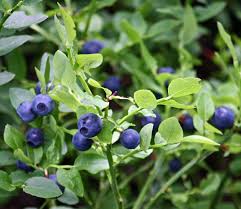Bilberry (Vaccinium myrtillus L.) fruits are a recognized source of bioactive compounds with documented bioactivities. While bilberry fruits are commonly utilized, the leaves are frequently considered industrial by-products. However, recent studies have shown that bilberry leaves are also a valuable source of phytochemicals with promising dermocosmetic applications, exhibiting high levels of bioactive compounds and significant antioxidant activity, alongside potential skin-rejuvenating effects.
Skin aging and pigmentation disorders are significantly influenced by the activity of various enzymes, including tyrosinase, hyaluronidase, and collagenase, whose overexpression can be induced by factors like UV radiation. Tyrosinase plays a key role in melanogenesis, and its excessive activity leads to hyperpigmentation, such as freckles and age spots. Hyaluronidase breaks down hyaluronic acid, an essential component for skin hydration and elasticity, and its excessive activity contributes to reduced skin moisture and wrinkle formation. Collagenase degrades collagen, the most abundant structural protein in the skin, leading to a wrinkled and toneless appearance when overactive due to aging or external factors like UV radiation. Therefore, inhibiting these enzymes and providing UV protection represent crucial strategies in anti-aging skincare.
This study aimed to evaluate the in vitro inhibitory effects of bilberry fruit and leaf extracts prepared with various NaDES against tyrosinase, hyaluronidase, and collagenase, and to examine their UV protective activity. The research also sought to compare the activities of NaDES extracts with those from conventional solvents and to highlight the potential of bilberry leaves, often treated as waste, as a valuable source of dermocosmetic ingredients.
Methods
The study prepared ten bilberry fruit and leaf extracts using ultrasound-assisted extraction with three natural deep eutectic solvents (malic acid–glycerol, tartaric acid–sorbitol, and citric acid–sorbitol) and two conventional solvents (water and 50% ethanol). These extracts were then subjected to in vitro evaluation for their UV protective activity (calculated as SPF using the Mansur Equation) and their inhibitory potential against tyrosinase, hyaluronidase, and collagenase. Additionally, the phenolic compound content was analyzed using HPLC, and the safety of selected NaDES extracts (MG-BL and CS-BF) was assessed in a 24-hour in vivo patch test on human volunteers.
Key Findings
• Superiority of NaDES Extracts: NaDES extracts demonstrated better inhibitory activity against key skin enzymes (tyrosinase, hyaluronidase, collagenase) and exhibited higher UV protective activity (higher SPF values) compared to water and ethanol extracts.
• Bilberry Leaves are More Potent than Fruits: Across all tested bioactivities—UV protection, anti-tyrosinase, anti-hyaluronidase, and anti-collagenase—bilberry leaf extracts consistently showed greater potency and higher phenolic content than their corresponding fruit extracts.
• Malic Acid–Glycerol (MG) Leaf Extract is the Most Potent: The bilberry leaf extract prepared with malic acid–glycerol (MG-BL) emerged as the most potent among all tested extracts. It exhibited strong anti-tyrosinase activity (IC50 = 3.52 ± 0.26 mg/mL), anti-hyaluronidase activity (IC50 = 3.23 ± 0.30 mg/mL), anti-collagenase activity (IC50 = 1.84 ± 0.50 mg/mL), and the highest measured SPF value (8.12 ± 0.42).
• Correlation between Bioactivity and Phenolic Compounds: Correlation analysis revealed a statistically significant strong correlation between UV protective activity (SPF) and the content of chlorogenic acid and hyperoside. Similarly, anti-tyrosinase activity significantly correlated with the content of both chlorogenic acid and hyperoside.
• Good Safety Profile: A 24-hour in vivo safety study on human volunteers demonstrated that the selected NaDES extracts (MG-BL and CS-BF) did not cause adverse skin reactions or disrupt basal skin parameters (pH, TEWL, EC, EI) under occlusion. In fact, the results suggested a prospective anti-irritant potential.
The findings have considerable future implications for the cosmetic and dermopharmaceutical industries. The potent enzyme-inhibitory and UV protective activities, coupled with a demonstrated good safety profile in vivo, position bilberry leaf NaDES extracts, especially MG-BL, as a promising natural and green raw material for developing innovative anti-aging products. This research advocates for the valorization of a previously discarded industrial by-product, promoting sustainability in cosmetic ingredient sourcing. However, further in vivo studies are crucial to comprehensively assess the long-term effects and efficacy of these selected extracts on human skin, paving the way for their broader application in advanced skincare formulations.
Link to the study: https://www.mdpi.com/2223-7747/14/15/2374

